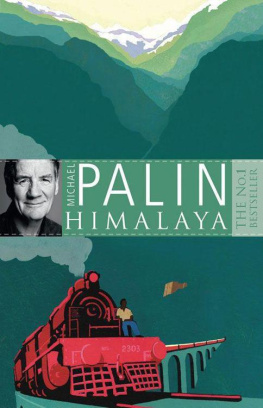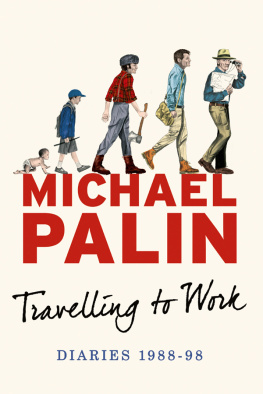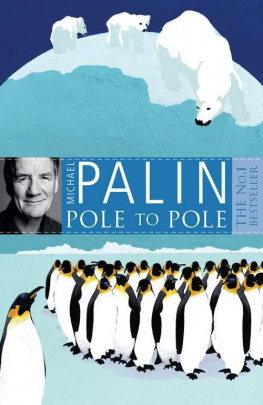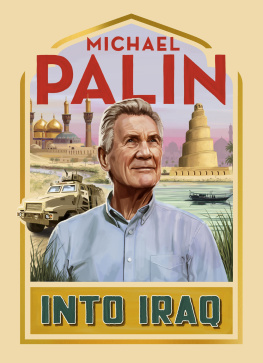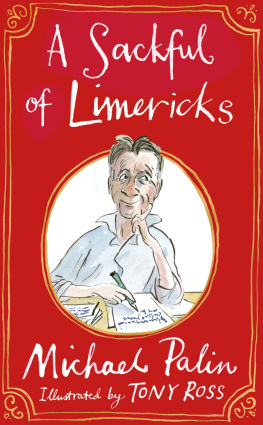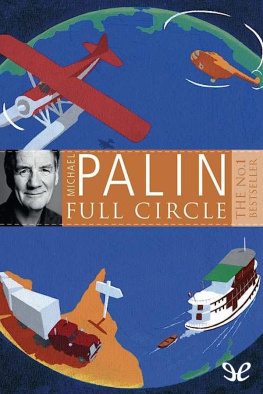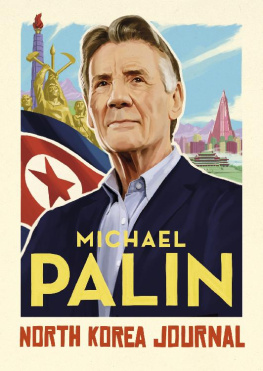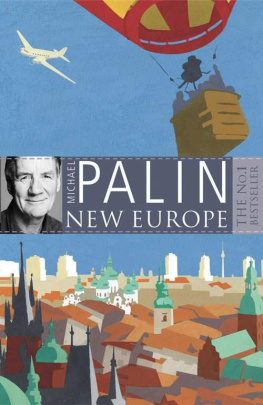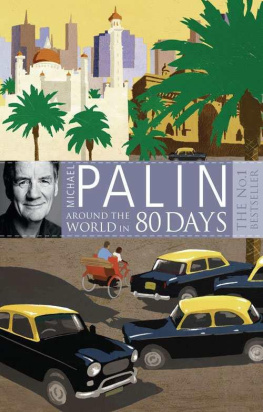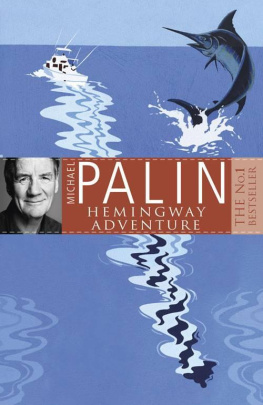MICHAEL PALIN is a scriptwriter, comedian, novelist, television presenter, actor and playwright. He established his reputation with Monty Pythons Flying Circus and Ripping Yarns . His work also includes several films with Monty Python, as well as The Missionary , A Private Function , A Fish Called Wanda , American Friends and Fierce Creatures . His television credits include two films for the BBCs Great Railway Journeys , the plays East of Ipswich and Number 27 , and Alan Bleasdales GBH .
In 2006 the first volume of his diaries, 1969-1979: The Python Years , spent several weeks on the bestseller lists. He has also written books to accompany his seven very successful travel series: Around the World in 80 Days (an updated edition of which was published in 2008, twenty years later), Pole to Pole , Full Circle , Hemingway Adventure , Sahara , Himalaya and New Europe . Most have been No 1 bestsellers and Himalaya was No 1 for 11 weeks. He is the author of a number of childrens stories, the play The Weekend and the novel Hemingways Chair . Visit his website at www.palinstravels.co.uk .
Basil Pao began his photographic career in 1980 on his return to Hong Kong after ten years in the United States, where he was an art director for Atlantic, Polygram and Warner Bros. He first worked with Michael Palin on the design for the book accompanying Monty Pythons Life of Brian . They have since collaborated on the books based on his seven travel series. In 2007 he wrote and photographed China Revealed: A Portrait of the Rising Dragon .
Himalaya
MICHAEL PALIN
Photographs by Basil Pao

A WEIDENFELD & NICOLSON EBOOK
First published in Great Britain in 2004 by Weidenfeld & Nicolson
This ebook first published in 2010 by Orion Books
Copyright (c) Michael Palin 2004
Photographs copyright (c) Basil Pao 2004
Original design and art direction for hardback
edition by David Rowley (c) Weidenfeld & Nicolson 2004
Editor hardback edition Claire Marsden
Maps by Maps Ink
The moral right of Michael Palin to be identified as the author
of this work has been asserted in accordance with the
Copyright, Designs and Patents Act 1988.
All rights reserved. No part of this publication may be reproduced, stored in a retrieval system or transmitted in any form or by any means, without the prior permission in writing of the publisher, nor to be otherwise circulated in any form of binding or cover other than that in which it is published without a similar condition, including this condition, being imposed on the subsequent purchaser.
A CIP catalogue record for this book
is available from the British Library.
ISBN: 978 0 2978 6360 1
The Orion Publishing Group Ltd
Orion House
5 Upper Saint Martins Lane
London WC2H 9EA
This ebook produced by Jouve, France
An Hachette UK Company
www.orionbooks.co.uk
Contents

Introduction
Ive always had a soft spot for my Penguin Encyclopaedia of Places . On a dull day when I should be talking to someone about tax returns I like to open it at random and set off a few quiet fantasies. Initial disappointment that youve opened it at Norwich and Nottingham can turn quickly to a frisson of excitement as, lower down the page, your eye alights on Noumea, Nova Lisboa and Novara, all places Id leave for tomorrow if someone said I had to.
At the end of 2002, with Sahara still warm, as it were, Roger Mills came up with the idea of following it with a series on the Silk Route. When I looked at the map I saw an awful lot of desert along the way, and I was looking for something that would take me away from desert sands for a while. I was about to close the atlas regretfully when my eye drifted south and east to where the Silk Route becomes entangled with that long, white-tipped mass of mountains, hanging like a raised eyebrow above India, and connected by the single word: Himalaya.
Something began to tingle. I reached for the Encyclopaedia of Places and found the page I was looking for. Hillingdon , Greater London Borough, Hinckley , Urban District in Leicestershire and there, snugly between the two, Himalaya . In Sanskrit, Abode Of Snow. Vast mountain system in central Asia lying along the S edge of the Plateau of Tibet, enclosed by the Indus and the Brahmaputra Rivers. It extends generally ESE in an immense curve about 1500 miles long. There wasnt a word in that brief description that didnt thrill me, and by the time I shut the book I knew what the next two years were going to be about. (No, not Hillingdon in 12 one-hour episodes.)
What the Sahara is to desert, the Himalaya is to mountains. Both share the same contradictory attractions, appealing and appalling, tempting and terrifying in equal, and ultimately irresistible, measure.
By rights I should have followed up Sahara with something easier. Perhaps I should have taken more seriously our sound recordist John Pritchards suggestion of a series called Death By Luxury. But its the mind as well as the body you have to look after, and thats where the Himalaya seemed to have the edge.
All the elements that appeal to me most about travel were on offer. The stimulus, mental and physical, of working at extremes, the breaking of new ground (I had never been to any of the places on our route), and the chance to go in by the back door, as it were, and see how lives are lived in a fascinatingly mixed bag of countries: superpowers of the future like India and China; countries like Pakistan, recently pushed to the centre of international politics; secretive, unconquered mountain kingdoms like Nepal and Bhutan; and remote lands on the margin of the worlds consciousness like Nagaland and Ladakh.
The idea seemed to appeal to my team as instantly as it did to me, and setting aside advancing ages and hopes for quieter lives, we committed to a Himalayan journey at the beginning of 2003.
From the outset problems loomed as large as the mountains themselves. Pakistan was, though Im glad to say no longer is, the subject of a Foreign Office advisory against all but essential travel. The whole Kashmir region was highly volatile, and the Maoists in Nepal were engaged in an increasingly threatening guerrilla war with the government. The Chinese were highly sensitive about allowing television crews into Tibet, and the Indian government was wary of our safety in Assam.
To their enormous credit, our production team soothed troubled brows successfully and we were able to leave for the Khyber Pass in May 2003.
There were crisis points, including a brush with the Maoists in Nepal, a nasty bout of illness halfway up Annapurna, and the loss, and subsequent recovery, of one of our crew to altitude sickness as we pushed up to Everest Base Camp. There were problems that could have been much worse, like the SARS epidemic in China, snowstorms in Bhutan and strikes in Bangladesh, but we were more or less intact by the time our tired little band emerged triumphant from a circuitous progress through six countries and 3000 miles of Himalaya at the beginning of April 2004.
The schedule was very tight, and Im aware that these diaries are stronger on spontaneity than sober reflection.
What I feel we have achieved, none the less, is to put the Himalaya in a human perspective. We found people living at altitudes higher than the highest mountains in Europe; ancient civilizations surviving on arid, wind-scoured plateaux; gorges two and a half miles deep, through which traders have found their way for thousands of years and, everywhere, religion, vibrant and colourful, and thriving in adversity. In short, we found a Himalaya not reticent and forbidding, but permeated by every sort of human activity.
Next page
